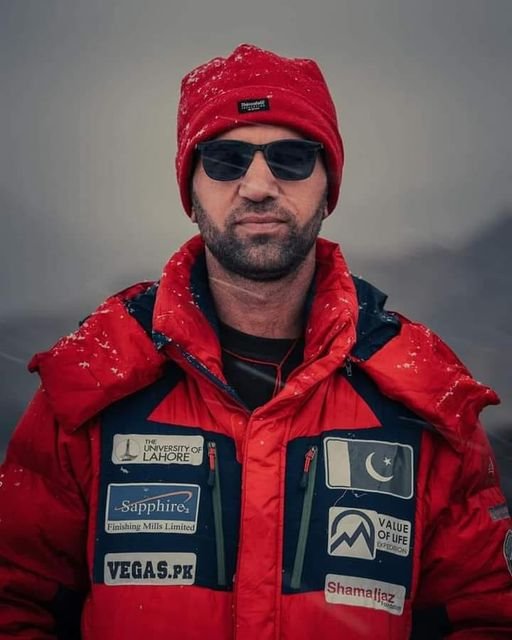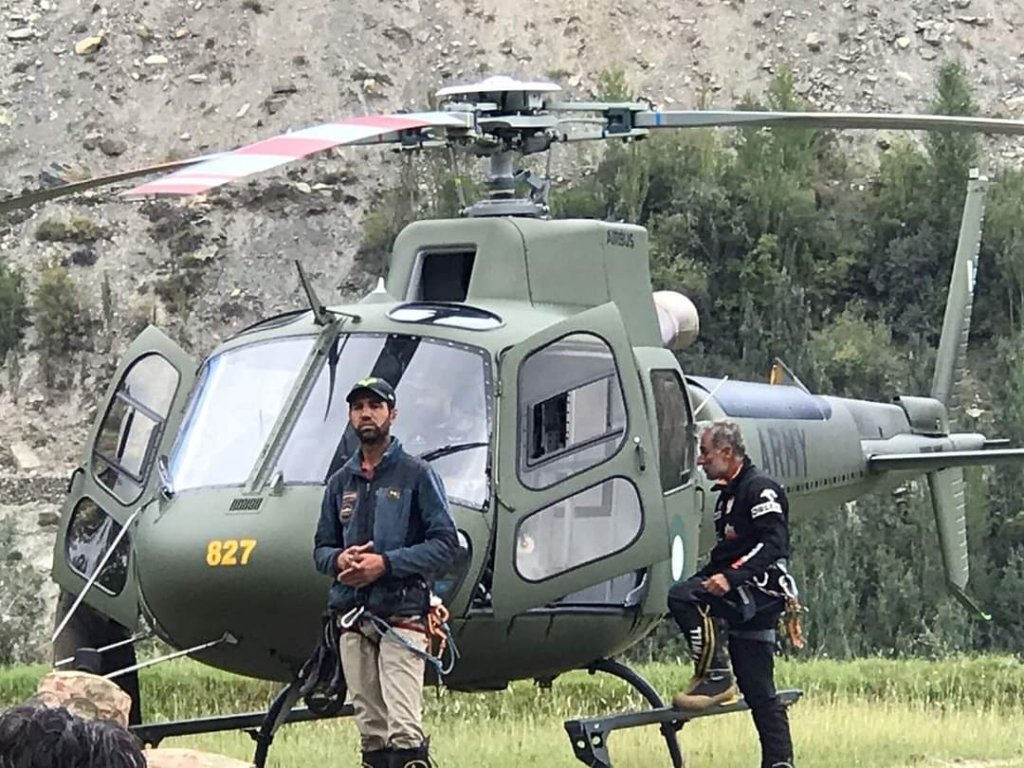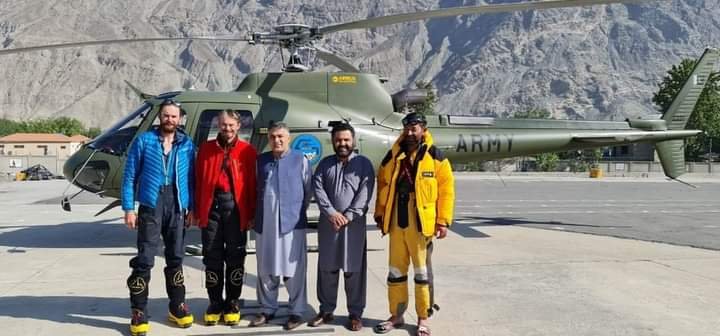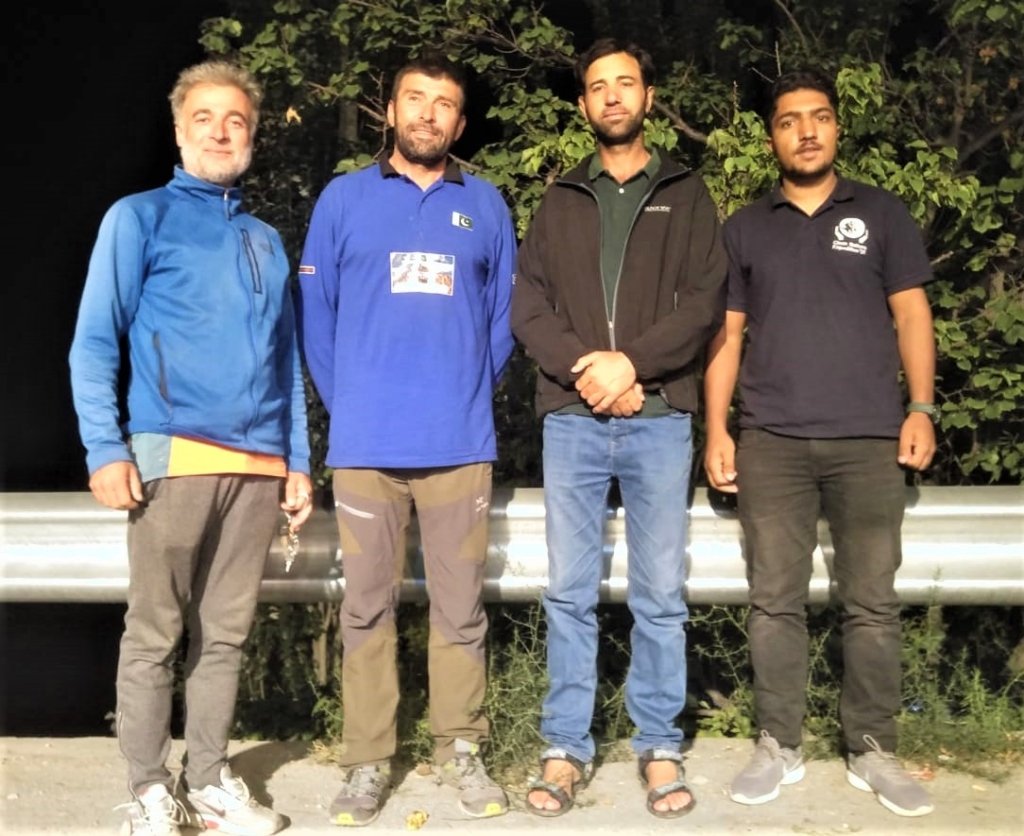What went wrong with the climbers and how to avoid such risks? Abdul Joshi, leader of the rescue team and an established climber in an exclusive interview with The High Asia Herald highlights the factors that created problems and suggests steps for putting in place complete rescue arrangements and safety gears.
by Ali Ahmed

Nagar: The ordeal for the three climbers stuck on Rakaposhi for a week ended as they were rescued by Askari Aviation helicopters on Wednesday, local authorities told the High Asia Herald.
The two helicopters plucked two climbers during the first round at about 8:30 am from a height of 5000m and the third one in the second flight safely and airlifted to Gilgit. They are in good condition, said Zulqarnain Khan, the Deputy Commissioner, Nagar District in Gilgit-Baltistan.
Local people were all praise for the district administration, the Army aviation pilots and the rescue team who worked together on this mission to rescue the three climbers.

In an exclusive interview with The High Asia Herald, Abdul Joshi, a professional climber from Shimshal said: “for the last four days, everyone was worried and wanted to know what was really happening on Rakaposhi.”
Joshi was assisted by Wahab Ali Shah, Eed Muhammad and Mansoor Karim, his fellow climbers from Shimshal, Kareem Hayat, and later joined by Sajid Sadpara, son of the legendary climber Muhammad Ali Sadpara in the ground rescue mission.
Sharing the details of the nerve-wracking operation with the Herald, Joshi who summited Nepal’s deadliest mountain Annapurna with Sirbaz Khan last spring said the rescue operation started on 12th September for the three climbers who ran into trouble due to bad weather and illness at 6099m height while descending on Sept 9.
The rescue team held a meeting with the pilots in Gilgit to finalise the rescue operation plan.
On the first day on Monday, two helicopters made attempts but could not locate the climbers as the peak was wrapped in clouds and strong winds were blowing.
On 13th September, early in the morning the weather provided a window for the pilots to fly up to the height of 7,000m and we were able to locate the climbers and study the route, said Joshi.
The choppers could not drop Joshi on the narrow ridge because of thick clouds and strong winds blowing on the peak. In the second round, the pilots were, however, successful in dropping ropes, food, tent, medicines and other equipment to the climbers which helped them to start descending.
“I volunteered if I can be dropped on the ridge at about 5,600m height so that I could climb up to the stranded climbers and rescue them. It was a difficult choice but I was positive and confident,” he shared.
As they climbed down to a suitable height, the pilots plucked them via the long-line method and airlifted them safely, he said.
He mentioned the factors that made the rescue operation difficult.
“Some people unaware of the risks and technicalities involved in such situations were making the climbers confused through satellite communication whether to remain stuck at the 6900m or start descending.”
Elaborating other factors, he said both the Czech climbers did not obtain the permit or clearance to climb the mountain; had not set up base camp, ground and management teams; did not fix ropes while ascending, and their insurance agency was not willing to cover any rescue operation as they had no documentation.
Read: https://thehighasia.com/team-at-nilt-to-start-rescue-operation-at-rakaposhi/
Explaining the protocol for rescue, he said: “to start a ground rescue operation we needed to plan, organize and execute a whole new expedition right from the scratch.”
We needed to establish a base camp, put together eight to 10 strong technical climbers, BC and management teams, fix ropes all the way up to 6900m, besides a lot of resources, porters, and equipment. But for all these requirements no one was willing to pay, Joshi said.
“We can volunteer our professional services but how can anyone afford the helicopter flights, equipment and other resources needed for such a big rescue operation,” he questioned.
He advised all the foreign climbers to follow the rules of the game and protocols. “By violating these rules, you are not only risking your own lives but also damaging the credibility of the whole climbing community,” Joshi said.
However, he appreciate both the Czech climbers and our Pakistani climber Wajidullah Nagri for their courage and perseverance by descending after getting stuck for so long at such a high altitude.
He showered praise on Army Aviation pilots who went beyond their line of duty to save three precious lives.
He also urged the tourism departments to make sure that all climbers have completed their documentation before they venture for climbing. He also requested the Gilgit-Baltistan government to put in place a proper fully equipped rescue system with helicopters, mobile ambulances and gears.
Wajidullah Nagri and his two Czech companions Peter Micek and Jakub Vicek got stuck at 6099m height while descending the 7,788m peak in the Karakorams on September 9.
The climbers set off from Camp 3 toward the summit of Rakaposhi early on Sept 8. They reached the top rather late in the day. At 5 pm, Nagri texted his brother Khairullah that they had just started descending. The weather worsened as they reached Camp C3. One of the Czech climbers had frostbite and fell ill.
They had climbed the British southwest spur route from the Kunti Glacier without fixing ropes that’s why they could not descend. The route from camp II to BC is steep and treacherous, said Joshi.
Rakaposhi is the world’s 27th and Pakistan’s 12th highest peak.
Nagri is only the second Pakistani climber to summit Rakaposhi after Sher Khan did it over 40 years ago. According to ACP, Rakaposhi is the only mountain in the world whose climb involves gaining over 5,000 vertical metres from the base camp to the summit.
Ali Ahmed works for GEO News as a reporter.

The High Asia Herald is a member of High Asia Media Group — a window to High Asia and Central Asia







